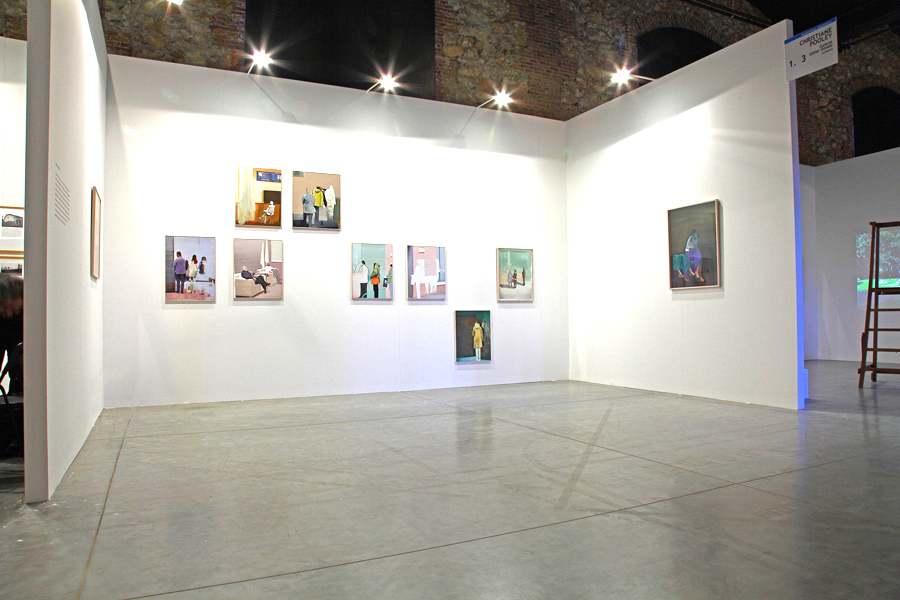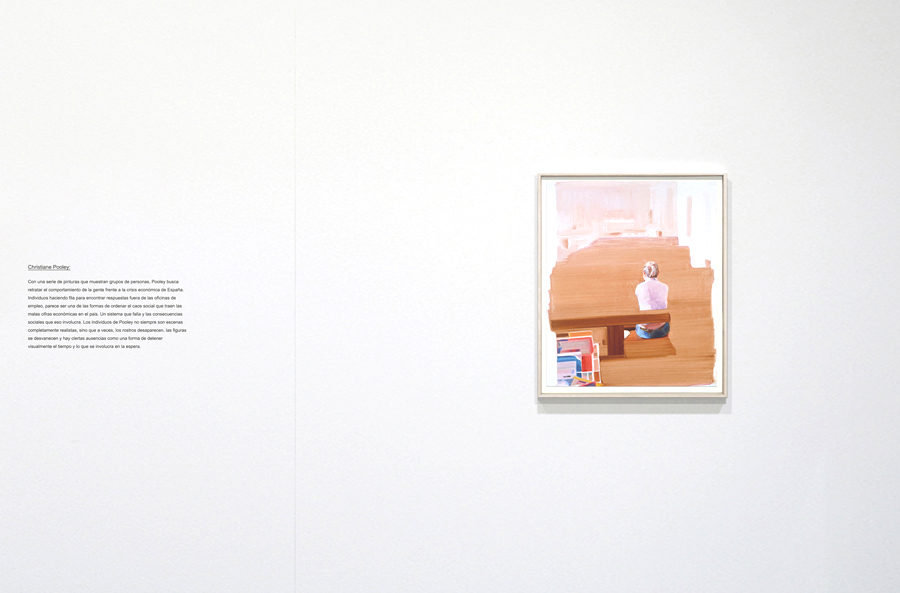
Christiane Pooley
SUMMA Art Fair | Curated section TRANSVERSAL
Date
September 19 - 22, 2013
Curator
Alexia Tala
Location
Matadero | Madrid
September 19 - 22, 2013
Curator
Alexia Tala
Location
Matadero | Madrid
I could have not notice it...
The artists selected for the Transversal Emergente / Mid-carrier I could have not noticed it… section have something or perhaps much in common. All of them, located in different contexts, have observed, analyzed and reflected their environment, incorporating it into their creative process. While contemporary art tends to question a lot of events that occur on a daily basis, many times they go by unnoticed as they are often part of daily life. In that sense, these artists have drawn experiences of a give context and emphasized their vision in photographs, paintings and installations turning their artistic practice and exercising their creation.
File, history and memory have been of interest for some artists, Russell Meseguer has unearthed traces of mining in Northern Chile, Bolivia and Spain, to generate a dialog between prosperity and failure, Carlos Motta has rescued the story on the issue of homosexuality in colonial times and has put the issue in the indigenista context again.
Other artists have analyzed a social and economic environment; Christiane Pooley has stopped in the Spanish financial and life position today through painting portraying the crisis. Meanwhile, Peter G. Romero has focused on the international economic stiuation and quoting Shakespeare has created a sound work.
![]()
The artists selected for the Transversal Emergente / Mid-carrier I could have not noticed it… section have something or perhaps much in common. All of them, located in different contexts, have observed, analyzed and reflected their environment, incorporating it into their creative process. While contemporary art tends to question a lot of events that occur on a daily basis, many times they go by unnoticed as they are often part of daily life. In that sense, these artists have drawn experiences of a give context and emphasized their vision in photographs, paintings and installations turning their artistic practice and exercising their creation.
File, history and memory have been of interest for some artists, Russell Meseguer has unearthed traces of mining in Northern Chile, Bolivia and Spain, to generate a dialog between prosperity and failure, Carlos Motta has rescued the story on the issue of homosexuality in colonial times and has put the issue in the indigenista context again.
Other artists have analyzed a social and economic environment; Christiane Pooley has stopped in the Spanish financial and life position today through painting portraying the crisis. Meanwhile, Peter G. Romero has focused on the international economic stiuation and quoting Shakespeare has created a sound work.


For other artists, the nature of their work is there, in existence, in the middle of the busy city, where you just have to know how to look. Cristián Silva-Avaria’s photographs outline his approach towards the interventions or temporary structures in public space. In Carme Nogueira’s work we can see how tha passing of time and urban transformation changes in memory, as well as in the use and livability of a city. A similar strategy is proposed by Philippe Gruenberg when considering urban domestic space / social, firstly, through the cinematic iconography and secondly, through a barroque imagery deployed in the city of Lima.
I could have not noticed it… lets us reflect from different perspectives, situations, events and urban aspects, social, political, historical and economic factors that we stopped noticing. The habit is enhanced at high speed and often leaves us asking, transofrming the obvious concern or worse commonplace. The way of looking of these artists with hard questioning and analyzing where they are or where they stopped during their lives, and with a U-turn in their contexts they ask themselves about how putting their experience in place at that time itself becomes them.
Alexia Tala


